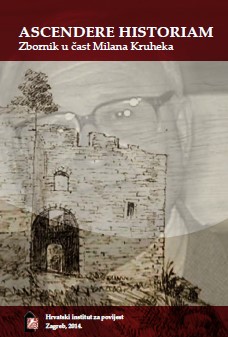Doseljenici i stranci iz Hrvatske, Slavonije i istočnojadranskih komuna u kasnosrednjovjekovnom Poreču
Immigrants and foreigners from Croatia, Slavonia and the East Adriatic communes in Poreč in the late middle ages
Author(s): Zoran Ladić
Subject(s): Local History / Microhistory, Social history, Culture and social structure , 15th Century
Published by: Hrvatski institut za povijest
Keywords: Poreč; the Late Middle Ages; immigrants and foreigners; notary records; notary Anthony de Teodoris;
Summary/Abstract: Based on the analysis of unpublished notary records of the notaries of Poreč (Anthony de Teodoris, Henry de Artizanibus), the oldest notary records of Poreč from the middle of the 15th century which are today kept in the State Archive of Pazin, the author depicts the issues of the immigrants and foreigners in Poreč commune in the late middle ages. The analyzed notary records contains circa 250 private and public documents (not counting last wills and codicils which the author has analyzed in other paper) in which are mentioned the immigrants and foreigners. They came in Poreč from three main directions – medieval Slavonia, medieval Croatia and East Adriatic communes. Of course, the commune of Poreč was also the place of the immigration of the settlers from other European regions, especially from Italy, Albania and Greece. Nevertheless, they are not analyzed in this paper. There were two main reasons for the immigration of the settlers from mentioned historical Croatian regions – economic prosperity and Ottoman raids. In the analyzed notary records more than 20 immigrants and foreigners are mentioned, and they mostly came from urban communities on Croatian coast and Dalmatia, than from continental cities and towns from Slavonia (Zagreb, Požega), and eventually from the County of Modruš. Vast majority of the immigrants were men and there was only one woman mentioned in the notary records. Considering the social structure, that is social inclusion, only two of the immigrants gained citizenship (ciuis et habitator), while the rest were just immigrants or inhabitants (habitatores, incole), or even just one foreigners (forenses). It is worth mentioning that there was one more social group of immigrants whose social position cannot be estimated. Considering the profession of the immigrants, they were mostly members of middle and lesser classes of medieval urban societies (craftsmen, apprentices, servants and maids). As it seems, the immigrants and foreigners have tried to incorporate themselves in the everyday life of the city and its district. These can be attested by their active engagements in everyday activities such are buying or selling the real estate (houses, land property), engagement in crafts for local community (especially in the manufacture of leather and by becoming tailors); they were also witnesses (testes) in notary documents etc. Finally, it can be argued that the active everyday life of the immigrants and foreigners from various Croatian regions had significantly helped in economic development as well as in development of the social diversity and the growth of the population of the commune of Poreč in the periods of frequent outbreaks of epidemic diseases which continually diminished the local population.
Book: Ascendere historiam: Zbornik u čast Milana Kruheka
- Page Range: 95-112
- Page Count: 18
- Publication Year: 2014
- Language: Croatian
- Content File-PDF

